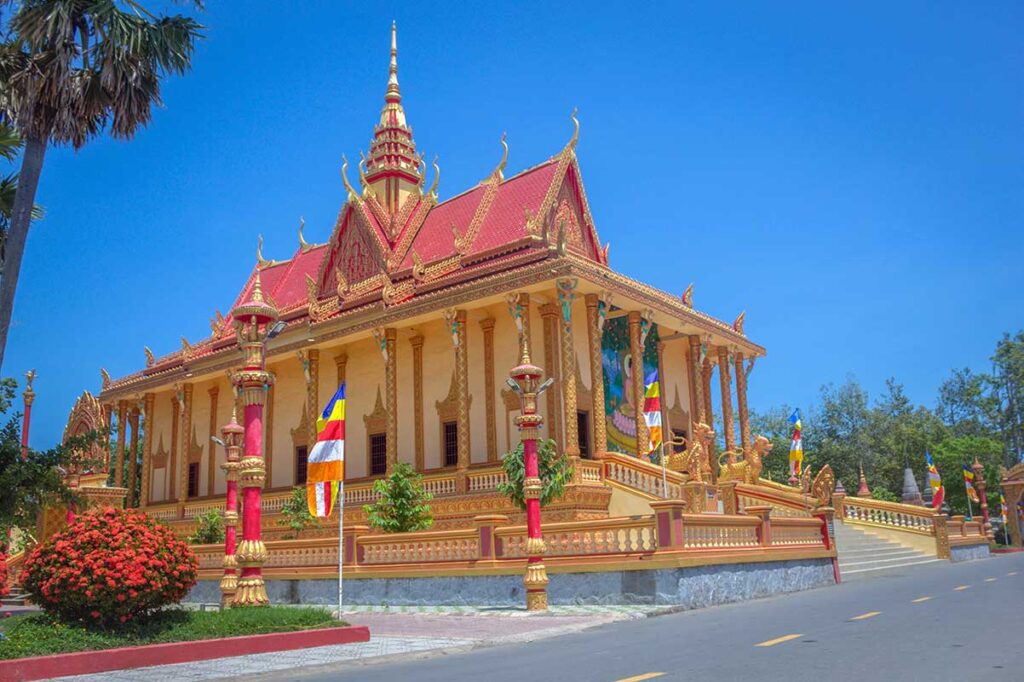What is Xiem Can Pagoda?
Historical background
Xiem Can Pagoda was built in 1887, originally carrying the Khmer name Komphisako, which refers to the wisdom and depth of Buddhist knowledge. The name later changed to Xiem Can, a Chinese-influenced term meaning “bordering the water,” a reference to its location near the coastal alluvial plains of Bac Lieu. Construction was funded by local Khmer families and wealthy patrons, including a couple named Nen and Nget, who provided land and resources. After completion, the community invited Dharma Master Thach Mau (1829–1909) to become the first abbot, beginning a long line of spiritual leadership.
Khmer Buddhism in Bac Lieu
The pagoda belongs to the Theravāda Buddhist tradition, practiced by the Khmer people across southern Vietnam. Unlike many Vietnamese pagodas that focus mainly on worship, Khmer pagodas also serve as cultural and educational centers. They are places where young men can temporarily ordain as novices to honor their families, and where important community ceremonies take place. In Bac Lieu, Xiem Can Pagoda has played this role for generations, making it as much a social and cultural hub as a religious site.
Use today
Today, Xiem Can Pagoda is still an active monastery with a resident community of monks. It remains a place of daily worship, Buddhist study, and large Khmer festivals such as Chôl Chnăm Thmây (New Year in April), Sen Dolta (Ancestor Day in autumn), and Kathina (robe-offering festival in the lunar calendar).

Beyond its spiritual role, the provincial government recognized the pagoda’s cultural value in 2001, designating it a Provincial Historical-Cultural Relic. This dual role—living temple and protected heritage site—makes it one of the most significant Khmer landmarks in the Mekong Delta.
Highlights of visiting Xiem Can Pagoda
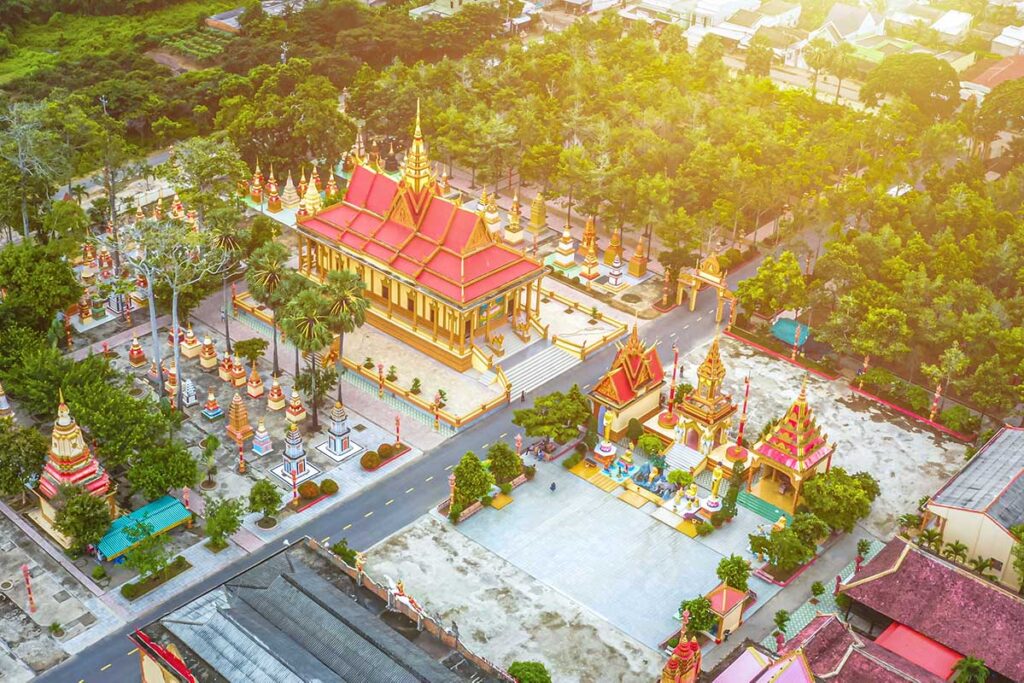
1. The Entrance Gate (Tam Quan)
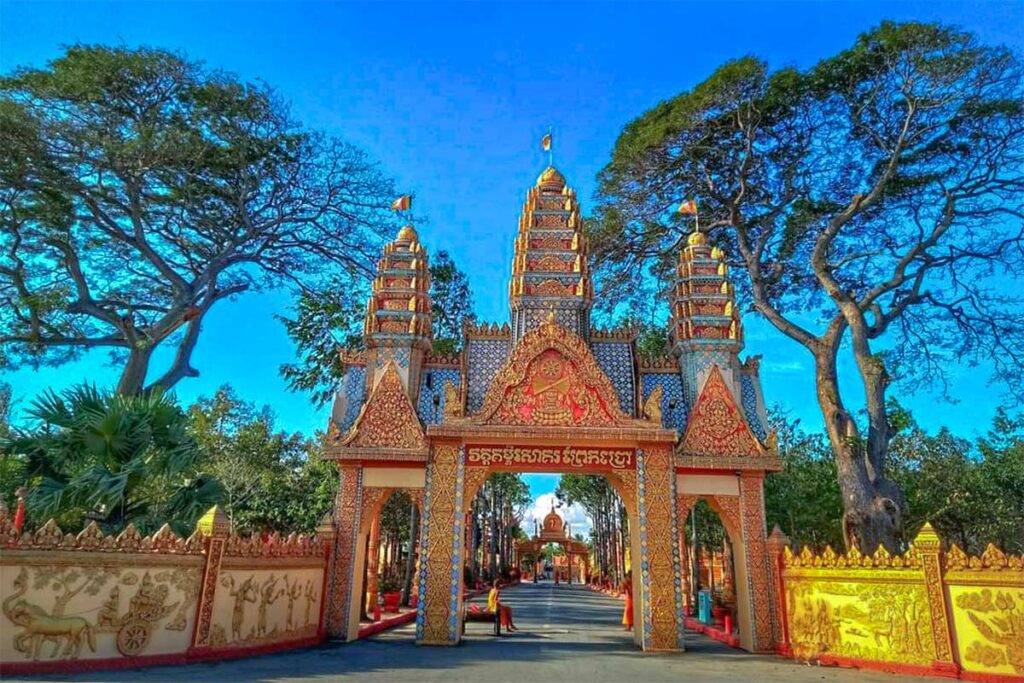
The entrance gate immediately sets the tone with its Angkor-style pointed towers and Khmer bas-reliefs. Look closely and you’ll see carvings of five-headed nagas (serpents), mythical Krut birds, and a seated Buddha image at the center. The bright colors and detailed patterns make it one of the most photogenic spots, and for many visitors this first impression feels more Cambodian than Vietnamese.
2. The Main Hall (Vihara)
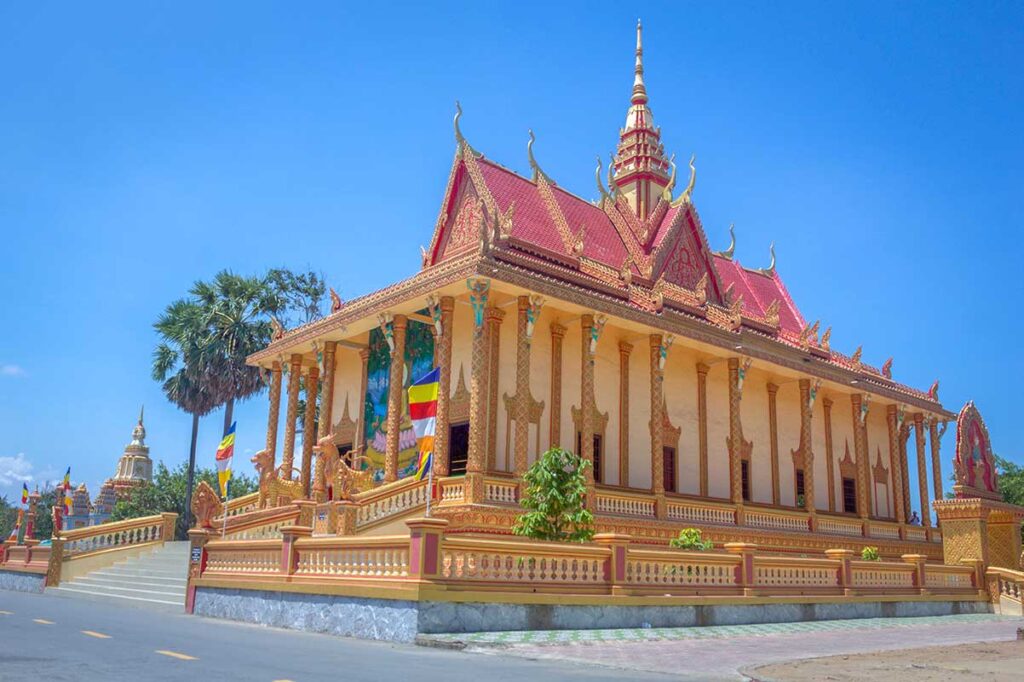
The main hall is the centerpiece of the complex. Built in a rectangular form (36m by 18m) and raised on a foundation, it is reached by 18 wide steps guarded by statues of mythical animals. The roof rises with tall spires, each corner decorated with naga heads curling outward.
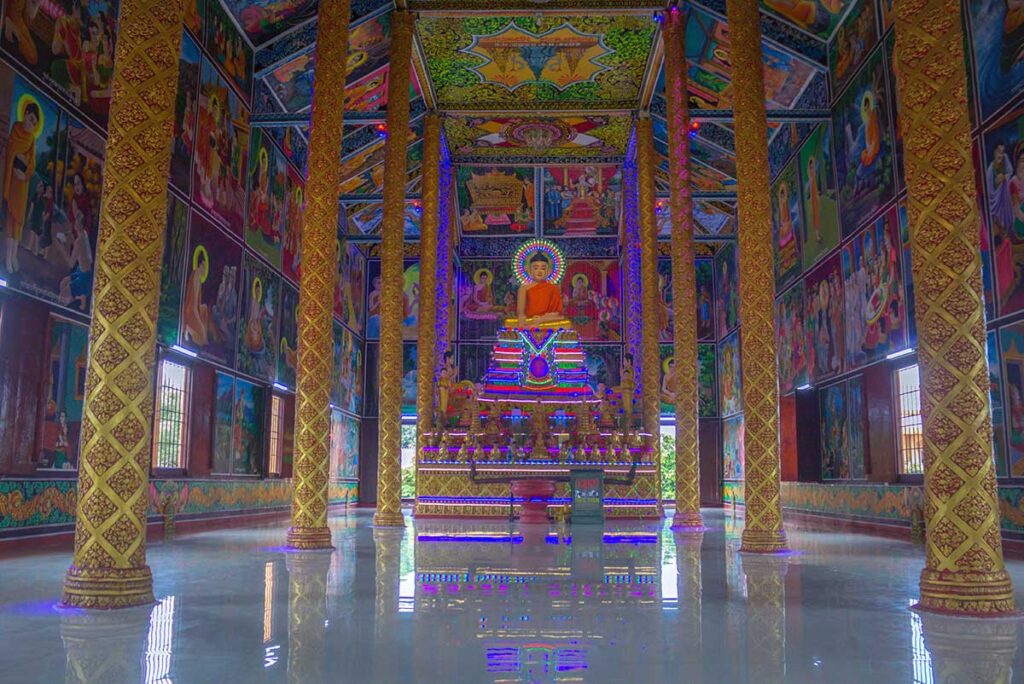
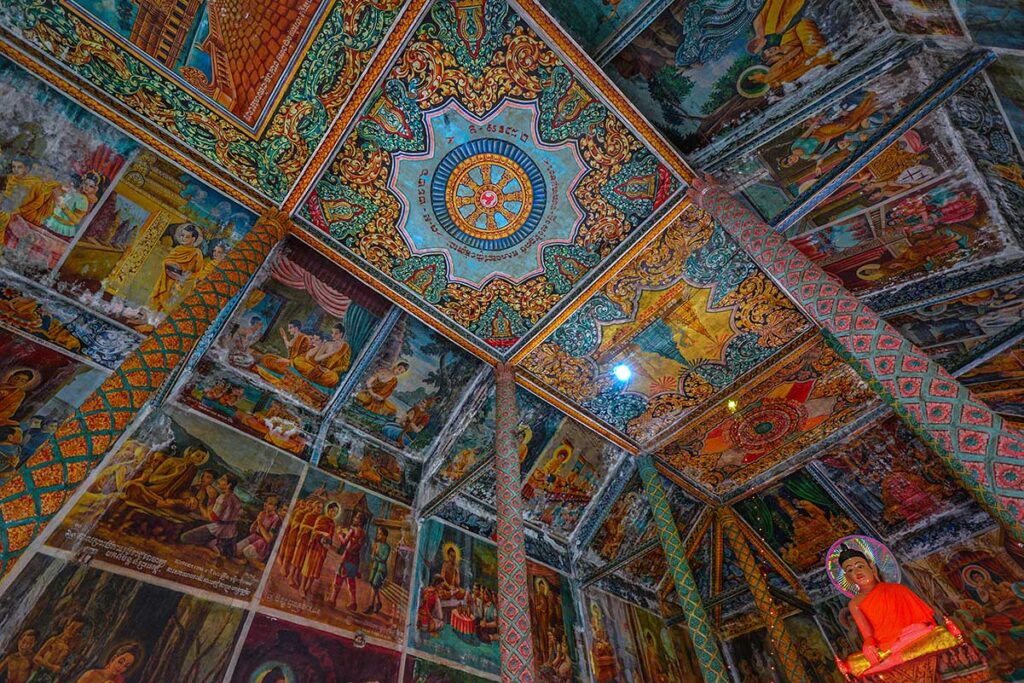
Inside, the hall is richly decorated: murals tell the life story of the Buddha, from birth to nirvana, and the hall is supported by over 100 concrete pillars painted in bright colors. At the center, a serene statue of the Buddha presides over the space, making it both impressive and atmospheric.
3. Stupas and Statue Gardens
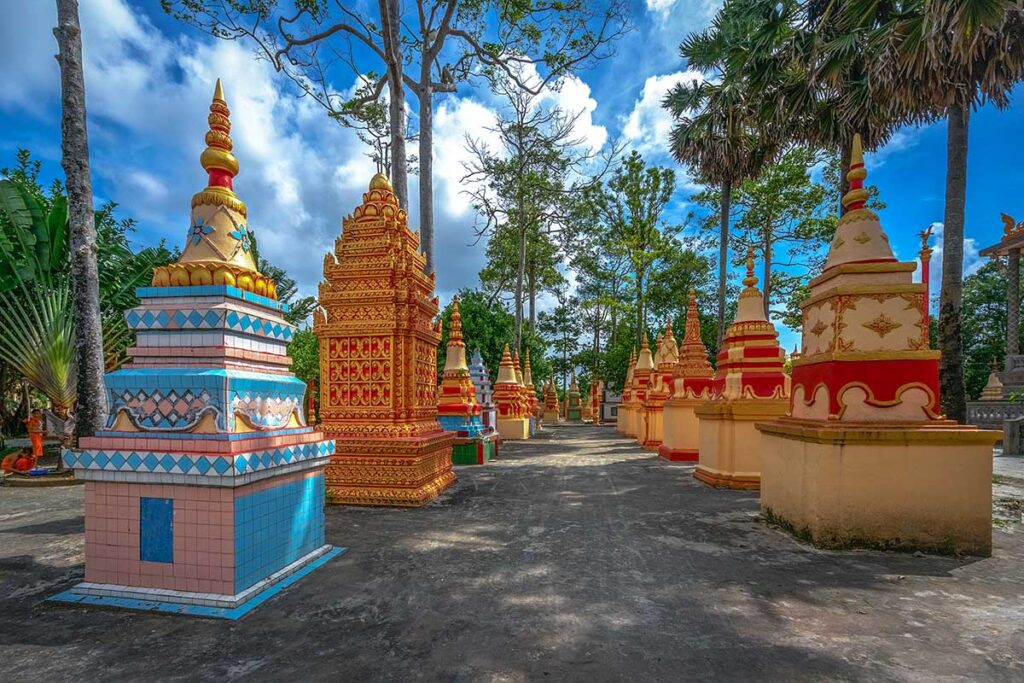
Opposite the main hall lies a garden-like area with stupas and Buddha statues in different meditation postures. Many of the stupas hold the ashes of monks, reflecting the Khmer Buddhist tradition of honoring the deceased within temple grounds. Combined with the colorful patterns and greenery, it’s a quieter area of the pagoda to explore at your own pace.
4. The Sala (Assembly Hall)
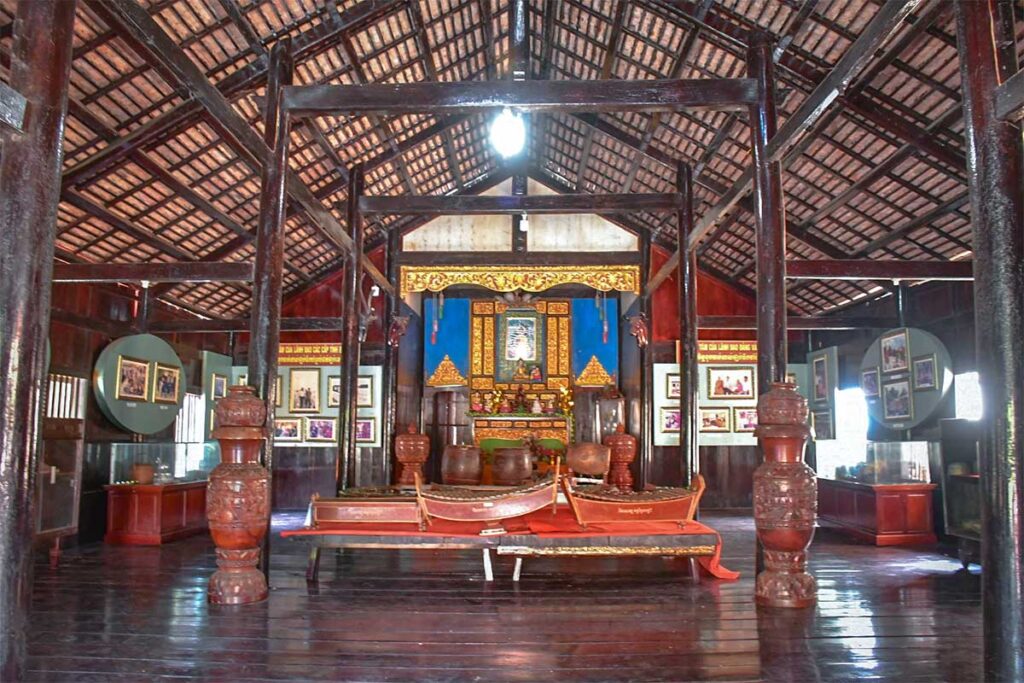
The sala, or assembly hall, serves as a gathering space for both monks and the Khmer community during ceremonies. Built largely from wood, it is decorated with distinctive Khmer motifs and houses a large bell. Above the entrance is a striking statue of Prince Siddhartha riding a white horse, a scene from his journey to enlightenment. While simpler than the main hall, the sala offers insight into the everyday function of the pagoda beyond worship.
5. Artistic & Cultural Treasures
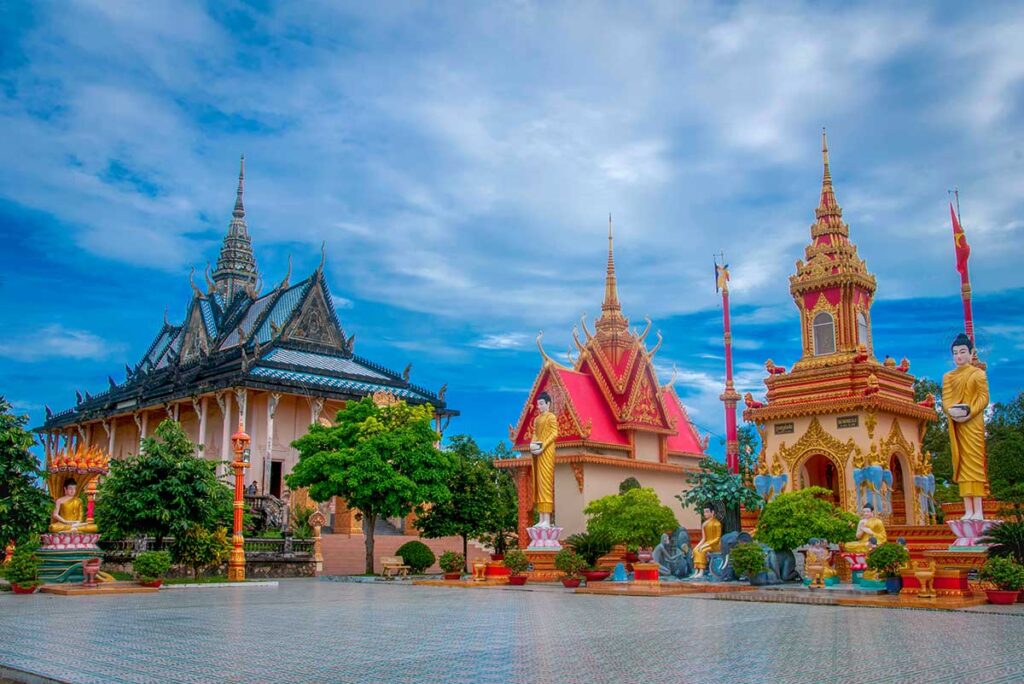
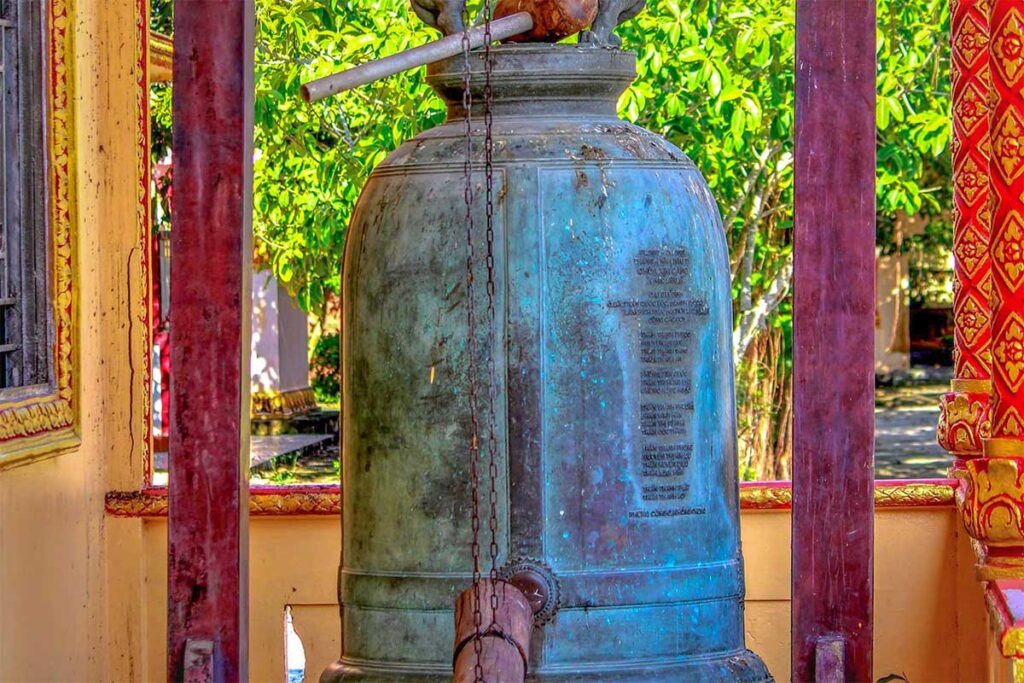
Scattered throughout the five-hectare grounds are over 115 statues, a mix of Buddhas and symbolic figures. Notable treasures include an ancient bronze bell from 1887, a stone stele inscribed in Khmer script, and a collection of palm-leaf manuscripts that preserve Buddhist teachings and old Khmer folk tales. These details are easy to overlook but represent the pagoda’s role as both a religious site and cultural archive.
6. Atmosphere & Experience
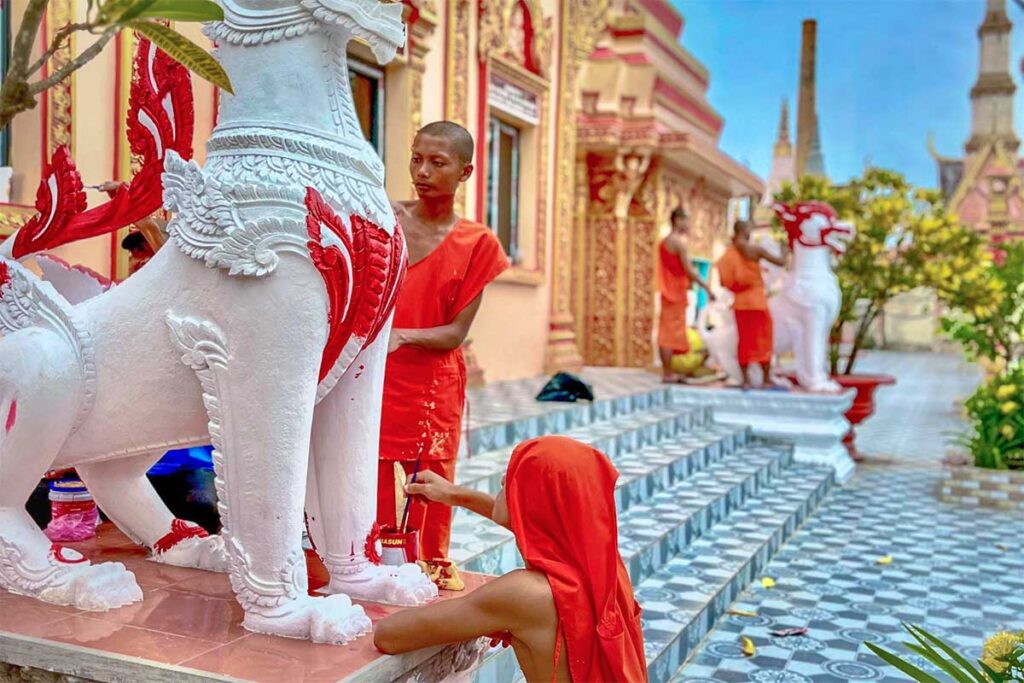
Walking through Xiem Can Pagoda is as much about atmosphere as it is about architecture. The grounds are spacious, lined with tall trees, and provide a sense of calm away from Bac Lieu city. Visitors often remark on the quietness and peacefulness, especially when prayers are being chanted in the main hall. At the same time, it’s worth noting that pigeons are common around the buildings, and their droppings sometimes affect the neatness of the site. Overall, it’s a good place to combine cultural sightseeing with a moment of reflection.
Location and How to get there
Where is Xiem Can Pagoda?
Xiem Can Pagoda is located in Vinh Trach Dong Commune, about 7–10 km from Bac Lieu city center. Its position near the coast also puts it close to the well-known Bac Lieu Wind Farm, making it easy to combine the two in a half-day trip. While most visitors come from Bac Lieu itself, the pagoda can also be included on a broader Mekong Delta journey from Soc Trang, Ca Mau, or even Can Tho.
Getting there & Around
- Private car/driver – The most convenient option if you want to explore several Bac Lieu highlights in one day. Roads are in good condition, and distances between attractions are short.
- Private tour with guide – Similar to hiring a driver, but with the added benefit of context. A local guide can explain the Khmer cultural and religious details that are easy to miss on your own.
- Motorbike – With light traffic in and around Bac Lieu, the pagoda is straightforward to find using Google Maps. However, this option is best suited to experienced riders with a valid license.
- Bus/flight connections – Bac Lieu does not have its own airport, so the nearest hub is Can Tho (about 120 km away). From Ho Chi Minh City or Can Tho, you can take a bus to Bac Lieu and then continue by taxi or motorbike taxi for the short ride to the pagoda.
Practical visiting information & Tips
Entrance Fee & Hours
Visiting Xiem Can Pagoda is free of charge, and the grounds are generally open from dawn to dusk. If you want a quieter atmosphere, mornings tend to be less busy.
Dress Code & Etiquette
As with other temples in Vietnam, dress respectfully: shoulders and knees covered is the basic rule. Inside the main hall, keep your voice low and avoid disturbing people who are praying. It’s also polite to remove your shoes before entering.
Facilities
There is a parking area just outside the entrance, and you’ll find small shops or food stalls along the road nearby. Facilities inside are minimal, and toilets are limited, so don’t expect the conveniences of a major tourist attraction.
Photography
Photography is allowed in the courtyards and gardens, where the architecture and statues are particularly striking. Inside the main hall, it’s better to be discreet—avoid flash and be mindful of worshippers. The murals and naga carvings are especially photogenic.
Nearby sights
Xiem Can Pagoda is often combined with other Bac Lieu highlights:
- Bac Lieu Wind Farm – photogenic giant wind turbines along the coast.
- Bac Lieu Bird Sanctuary – wetlands with seasonal birdlife.
- Cong Tu Bac Lieu House – the former residence of the famous “Bac Lieu playboy.”
- Ghositaram Pagoda – another Khmer pagoda with ornate design.
- Tac Say Church – Catholic pilgrimage site dedicated to Father Diep.
You can also read our full guide about Bac Lieu, with tips, sights and how to get around.
Is Xiem Can Pagoda worth visiting?
Xiem Can Pagoda is definitely one of Bac Lieu’s most impressive landmarks, especially if you’re interested in Khmer culture and architecture within Vietnam. Its scale, colorful murals, and Angkor-style details make it stand out from the more common Vietnamese Buddhist pagodas you see elsewhere in the country.
That said, the design will feel more reminiscent of temples in Cambodia or Thailand than uniquely Vietnamese, which is both its strength and its limitation. If you’ve traveled extensively in Southeast Asia and visited many Khmer temples, you might find Xiem Can less surprising. Still, within Vietnam, it’s notable for its history and the role it continues to play in the Khmer community.
In practical terms, the pagoda is well worth including if you’re already exploring Bac Lieu or nearby provinces like Ca Mau or Soc Trang. As a standalone trip from Ho Chi Minh City, however, it may not justify the long journey by itself. Instead, it works best as part of a broader Mekong Delta itinerary that combines culture, nature, and local life.
